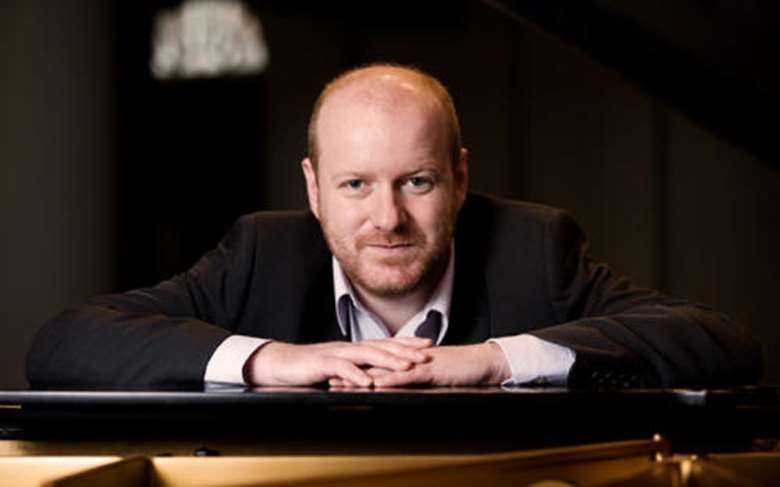Daniel Tong blog
Daniel Tong
Wednesday, July 15, 2020
Daniel Tong reflects on Mendelssohn's masterpiece, which remains as popular today as the day it was written

In 1839, when Mendelssohn produced his Piano Trio in D minor, Op 49, Robert Schumann immediately proclaimed it ‘the master trio of the age’. Schumann later enshrined his effusive words in music, embedding distinct homages to Mendelssohn’s work within his own first Piano Trio in the same key (1847). The age in question already included Beethoven’s Archduke Trio, Op 97 (1814) and the two piano trios by Schubert. Mendelssohn’s work has remained beloved of performers and audiences ever since, even during periods when its composer’s reputation waned somewhat under the oppressive shadow of Wagner and the ensuing period of diverse modernity. What are the secrets of this peerless work and why did Schumann, steeped in literature, choose those particular words in praising it?
Let us try, briefly, to define this musical moment, of which Mendelssohn and Schumann were integral players. Rarely in history have the greatest artists in any given genre shared such a symbiotic existence. In 1839 Robert was poised to marry the young superstar pianist, Clara Wieck, honing the final revisions of his Fantasy in C, Op 17, perhaps his masterpiece, which is at once a love letter to Clara and a monument to Beethoven and Schubert (dedicated to another world-leading pianist-composer, Franz Liszt). A few years earlier, Chopin had visited Leipzig, playing to Felix and Fanny Mendelssohn, as well as Schumann and Clara. Schumann would later dedicate his Op 16 Kreisleriana to him. Most of the primary musical figures of the age are already named in this paragraph; with a little knowledge of their music one can sense the differences in their artistic temperaments, but perhaps even more fascinating is this attitude, from an 1834 letter of Felix Mendelssohn:
The next morning, the three of us [Mendelssohn, Ferdinand Hiller and Chopin] were at the piano, which afforded me great pleasure … as a pianist Chopin is now one of the greatest of all – bringing about miracles that one would never have believed possible … We all three supplemented and, I believe, learned from each other.
After their marriage in 1840, the Schumanns’ house in Leipzig played host to the foremost musical figures of the era, often on a daily basis. Their neighbour, Mendelssohn, conducted Clara Wieck in numerous concerto performances, famously also stepping in for her at the first reading of Schumann’s Piano Quintet, Op 44 (1842), after which he made several suggestions that were taken up by Schumann in subsequent drafts of the score. Schumann could be jealous of others’ successes and Clara disparaging of musical styles that tended towards flamboyance, but the fertility of the musical flow between artists of such genius produced a stunning yield. The musical task in hand was to step into the new, post-Beethoven era, reinventing musical forms and aesthetics for a Romantic age.
Mendelssohn’s D minor Trio speaks to this new age with a dizzying freshness and vitality. Its effortless formal perfection and winning themes, frequently announced on the cello, house a work of often tormented Romanticism that could never have been written by Beethoven (dead for only 12 years in 1839), despite its seemingly formulaic, four-movement sonata structure. Here is a narrative of the tortured hero: witness for instance how the stormy travails of the first movement finally transform the innocent, major second theme into angst-ridden minor and ensuing frenzied coda where the spirit of Chopin is nearby in the whirling piano figuration. The second movement’s song without words seems initially from the salon (though elevated) before the tempestuous middle section, and the trademark gossamer Scherzo is something that Mendelssohn could have copyrighted - a fairy dance of exhilarating virtuosity.
But it is at the arrival of the finale that the true originality of this work is revealed, via a secret musical agent of which Schumann would have been proud. Signal moments of particular emotional intensity in the work have been marked by the appearance of a plaintive falling theme, reminiscent of Robert’s ‘Clara’ motif, first as descant to the first movement’s recapitulation and then at the heart of the Andante. With the end in sight, the finale plunges into a distressing minor, increasingly unsettled and seeming to lead towards tragedy as the falling theme reappears as the desperate second subject. But the coup de theatre is yet to come. The falling theme is reborn on the cello as a bringer of hope and optimism when least expected, allowing for its final, glorious statement as the work ends in celebration. Secretly, beneath the surface, this theme has journeyed from counterpoint to leading player, defining the work’s narrative in an utterly original way.
The Leipzig Circle Vol. 2: Chamber Music by Felix, Clara & Robert with the London Bridge Trio is out on the SOMM label on 17 July











